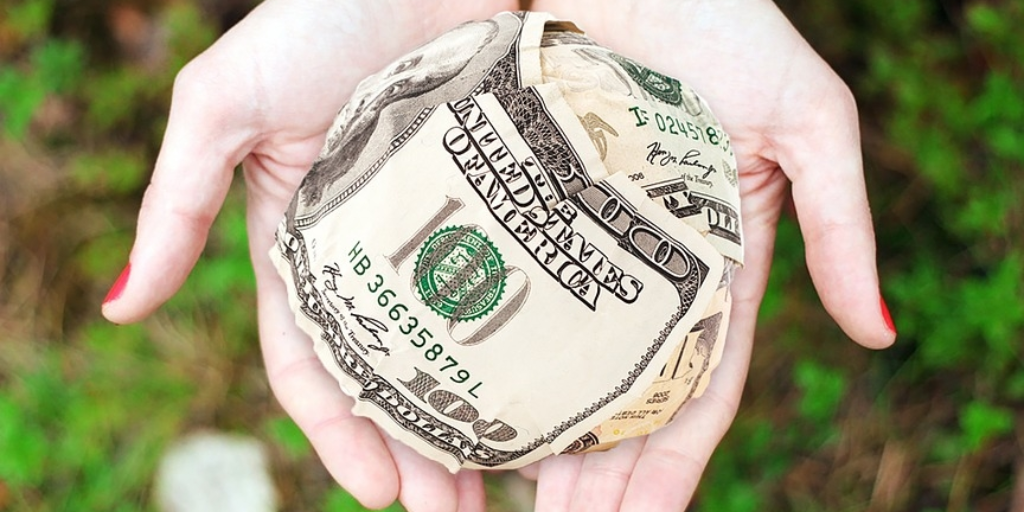
You did it. You crafted a compelling appeal with a great story that is sure to inspire action from your recipients. But you are no novice. You know that the wrong ask amount can cause even a great appeal to fall flat and donation response rates to plummet. Situations where major donors are asked for a mere $25 are the stuff of nightmares. And asking for too much from a given donor can inspire eye rolls and opt outs faster than you can click a mouse.
In this day and age, you need to personalize even this part of the fundraising process. But how?
Getting Personal: Individualized Next Ask Amounts Specific to Your Recipients
Sending effective appeals that translate into donations is no easy feat. According to M+R Benchmarks 2017, nonprofits received just a single precious donation for every 2,000 fundraising messages sent in 2016. That translated into $36 for every 1,000 fundraising emails delivered.
Getting the most out of your fundraising appeals means no longer assuming one size fits all. In the words of fundraising consultant, Kivi Leroux Miller, “There is no such thing as the general public” and your ask amount should reflect that. Here are three methods for doing just that:
1. Mode as your M.O.
Look at the mode for the gifts in your database. Remember from eighth grade math, the mode differs from the average in that the mode pinpoints the number appearing most often in a dataset. If you look at the three largest modes that occur in your donor file - say, $25, $75 and $250 - you may choose the approach of asking everyone whose last gift is between $25 and $74 to give $75.
2. Taking It to the Next Level
If you have implemented giving levels for your organization, you could ask donors to increase their giving to the next recognition level. You might even go a step further and ask the donor to give two levels up. With this strategy, even if the donor doesn’t respond to the highest ask but chooses the next level, there is still an increase in their giving.
{loadposition blog-ad-general}3. Multiplication Rock
The most effective method I’ve found for determining the ask amount for each donor is using a percentage increase. One straightforward approach is the multiplication of a previous gift or gifts amount by a predetermined percentage increase, like 10%. You then round that amount to the next logical number.
As an example, a previous gift of $25 with a percentage increase of 10% yields $27.50. Rounding up to the next $5 increment gives a next ask amount of $30.
This approach can be incredibly effective when you have a large volume of data while taking into account the donor’s previous relationship with your organization. It is also extremely malleable, allowing you to experiment with a variety of different percentages as well as calculations that include giving history beyond just the last donation amount.
Multiple Groups, Multiple Sizes, Multiple Tests
It’s important to note that segmentation is your friend. You may wish to apply different percentage increase methods to different groups of donors in your file. Also, what we’re really looking at here is your lower amount, non-major donors and prospects. Think of the folks that are giving you between $5 and $500 a year. That’s to whom this predictive model should apply. Beyond that, you’re likely getting into folks who need a little more finesse when it comes to asking. You can leverage the data you have by creating segments of current and lapsed donors. From there, separate these two main groups further by previous annual giving level, say, those under $100 from those giving between $100 - $500.
You should test your strategy and measure the results. This is the only way you can improve your fundraising program. You can ask donors multiple times in multiple ways. Donor fatigue is a myth, fair fundraiser. For proof, look no further than M+R Benchmark 2017’s key finding on email messages:
“On average, nonprofits sent 24 fundraising email messages per subscriber in 2016, along with 20 advocacy messages and 11 newsletters.”
When sending out those emails, just be sure you are getting better at the asking with each try!
To dig deeper to improve the success of your fundraising appeals, watch for our free recorded strategy webinar Making the Right Fundraising Ask: When, How and How Much. In this content-rich 45-minute webinar, we’ll empower you to:
- Improve the timing and methods of your fundraising appeals
- Understand powerful strategies for determining next ask amount using mode, giving levels, and percentage increases
- Articulate alternative calculations for next ask amount that leverage your donor history wisely
- Create a Next Ask Amount field in the Salesforce Nonprofit Success Pack that can be used in mass email fundraising appeals
- Use a variety of different formulas for determining Next Ask Amount in the Salesforce Nonprofit Success Pack
- Put personalized ask amounts into practice with your fundraising emails using Soapbox Mailer for a real-world example
- Understand how you can use Next Ask Amount when sending fundraising appeals with Pardot and the Salesforce Marketing Cloud to maximize conversions
Related Resources
- WEBINAR RECORDING: Making the Right Fundraising Ask: When, How, and How Much
- SALESFORCE HOW TO BLOG: Personalize fundraising appeals by creating Next Ask Amount in Salesforce Nonprofit Success Pack
- SALESFORCE HOW TO BLOG: 12 Formulas for Calculating Next Ask Amount in the Salesforce Nonprofit Success Pack
- SALESFORCE HOW TO BLOG: Improve sustaining donor appeals by creating Next Recurring Ask Amount in Salesforce Nonprofit Success Pack
- BLOG: Using Four Pillars for Powerful Fundraising Appeals
- BUYER'S GUIDE: 2017 Marketing Automation Comparison Report, Idealist Consulting